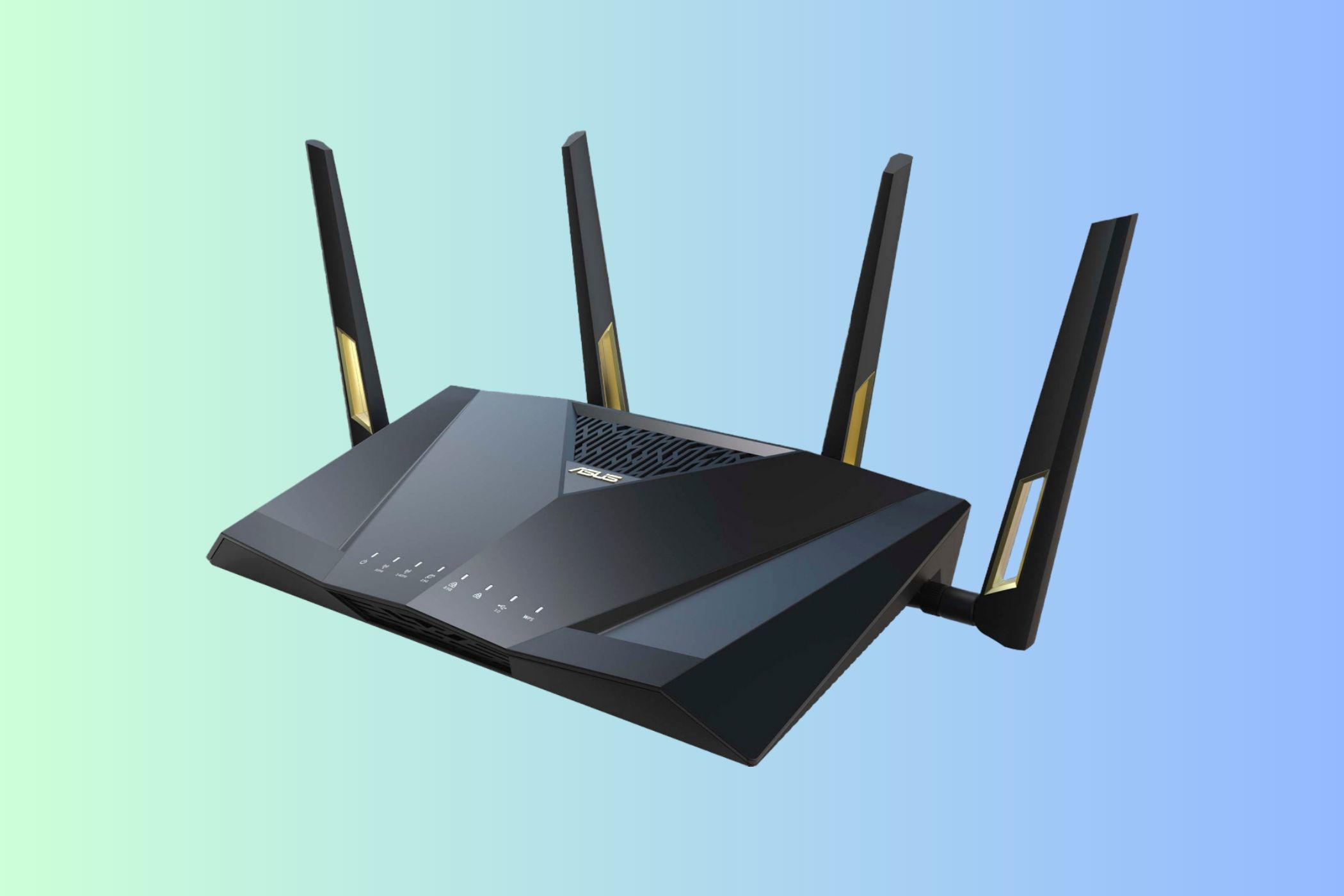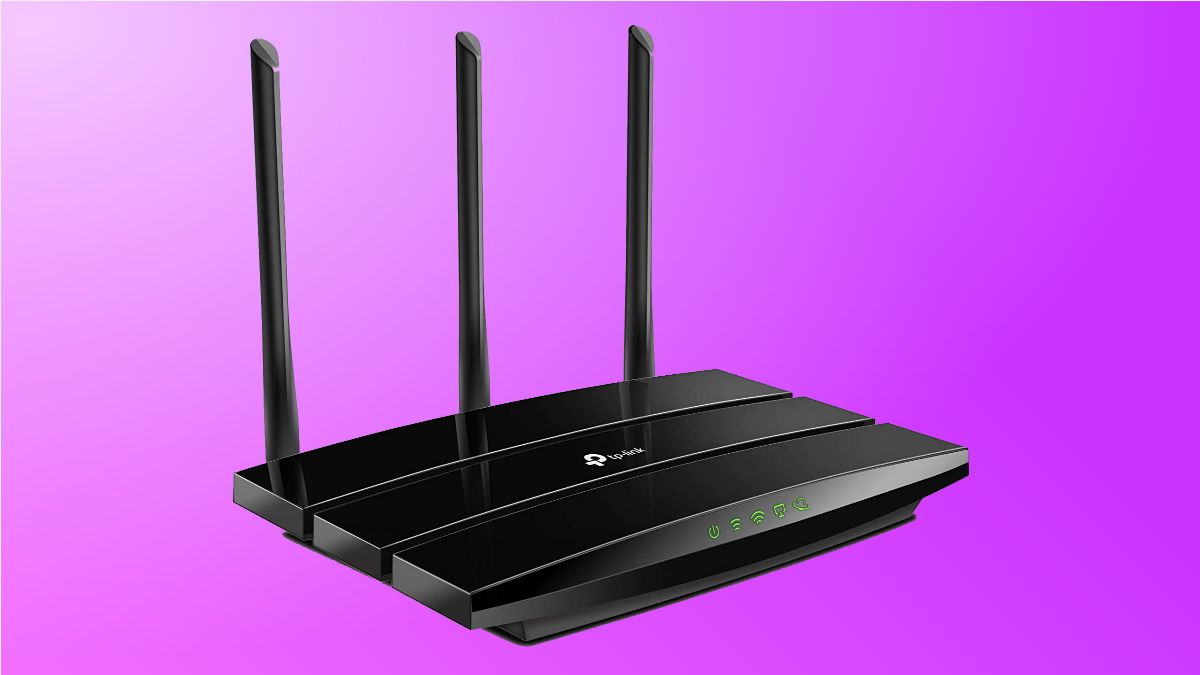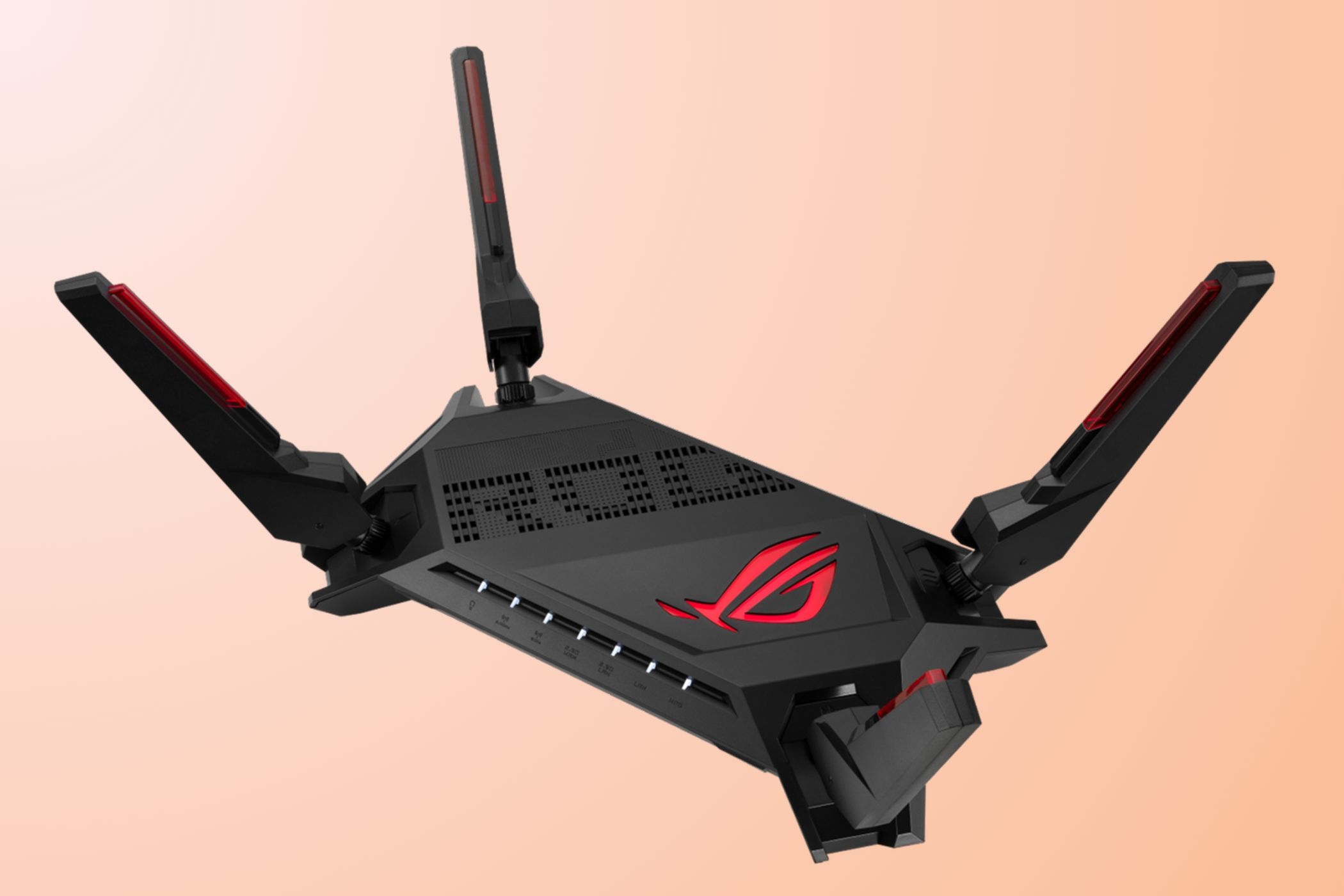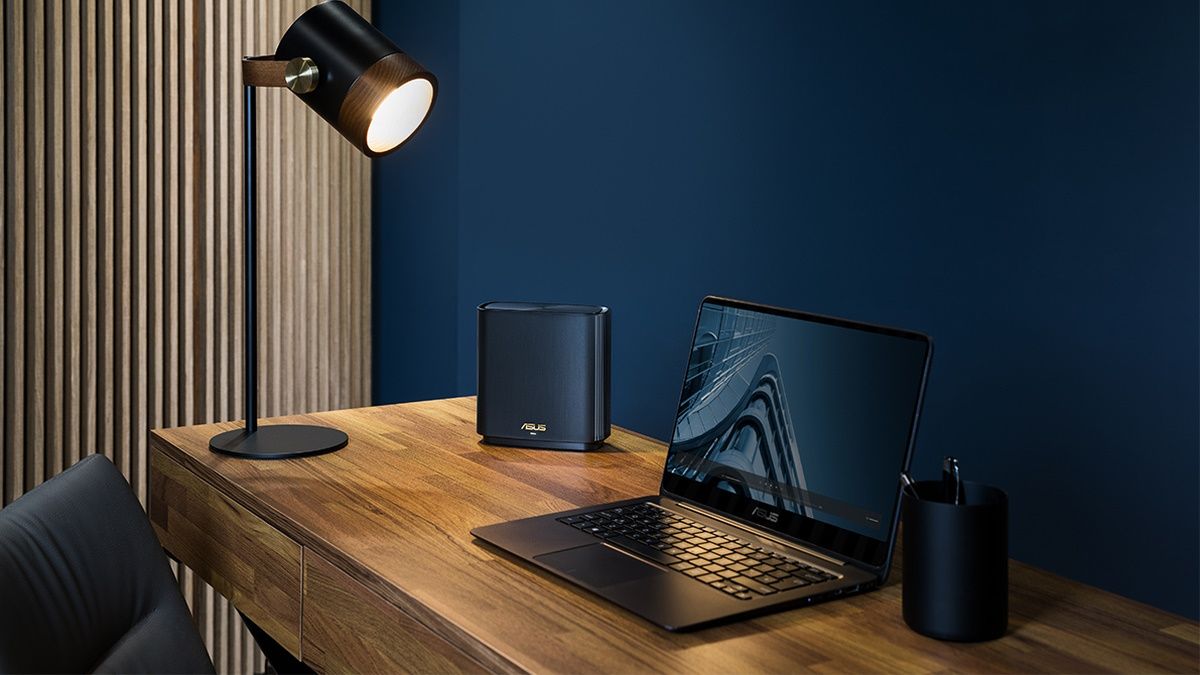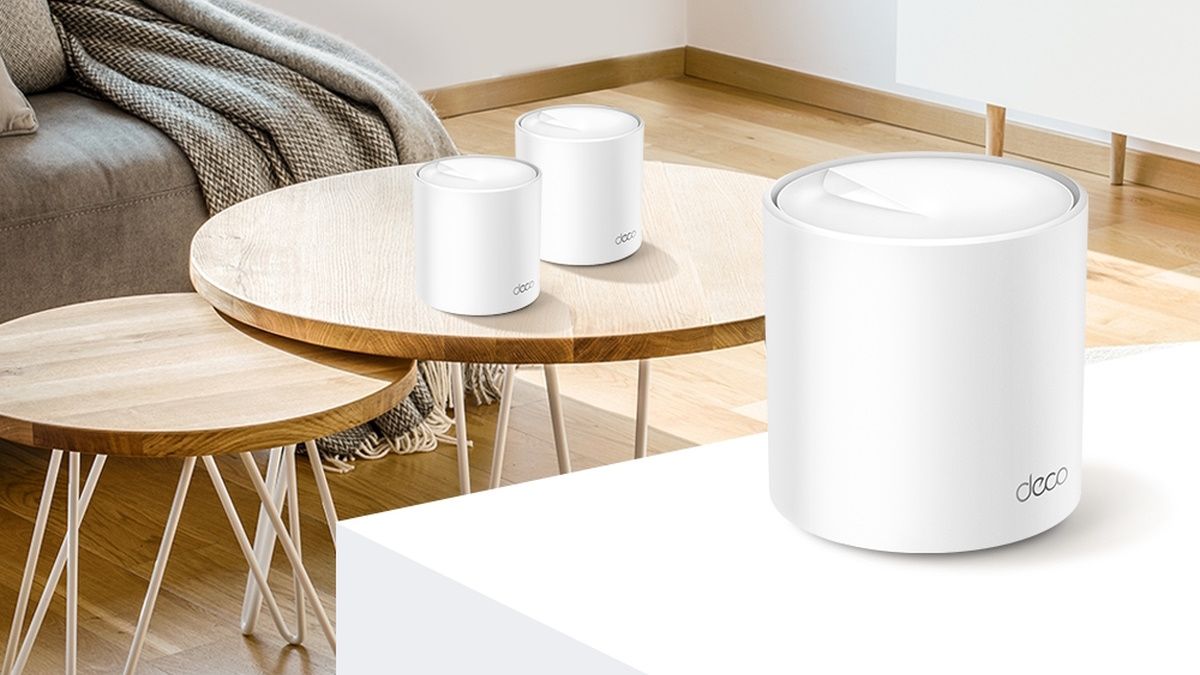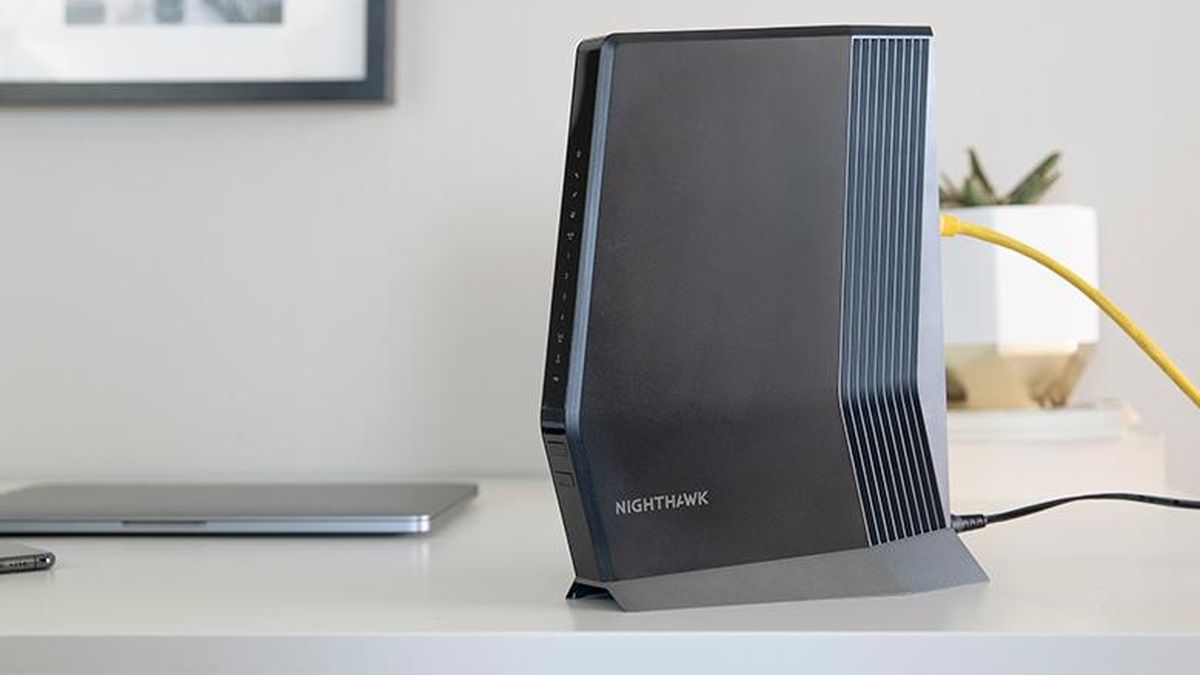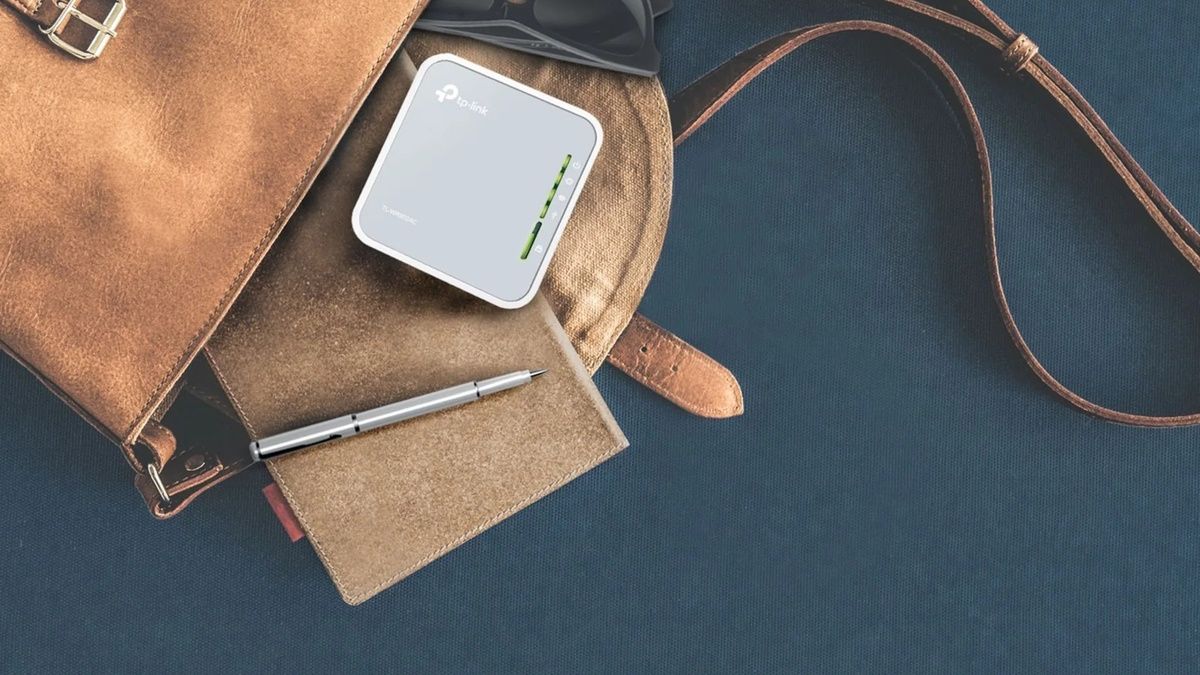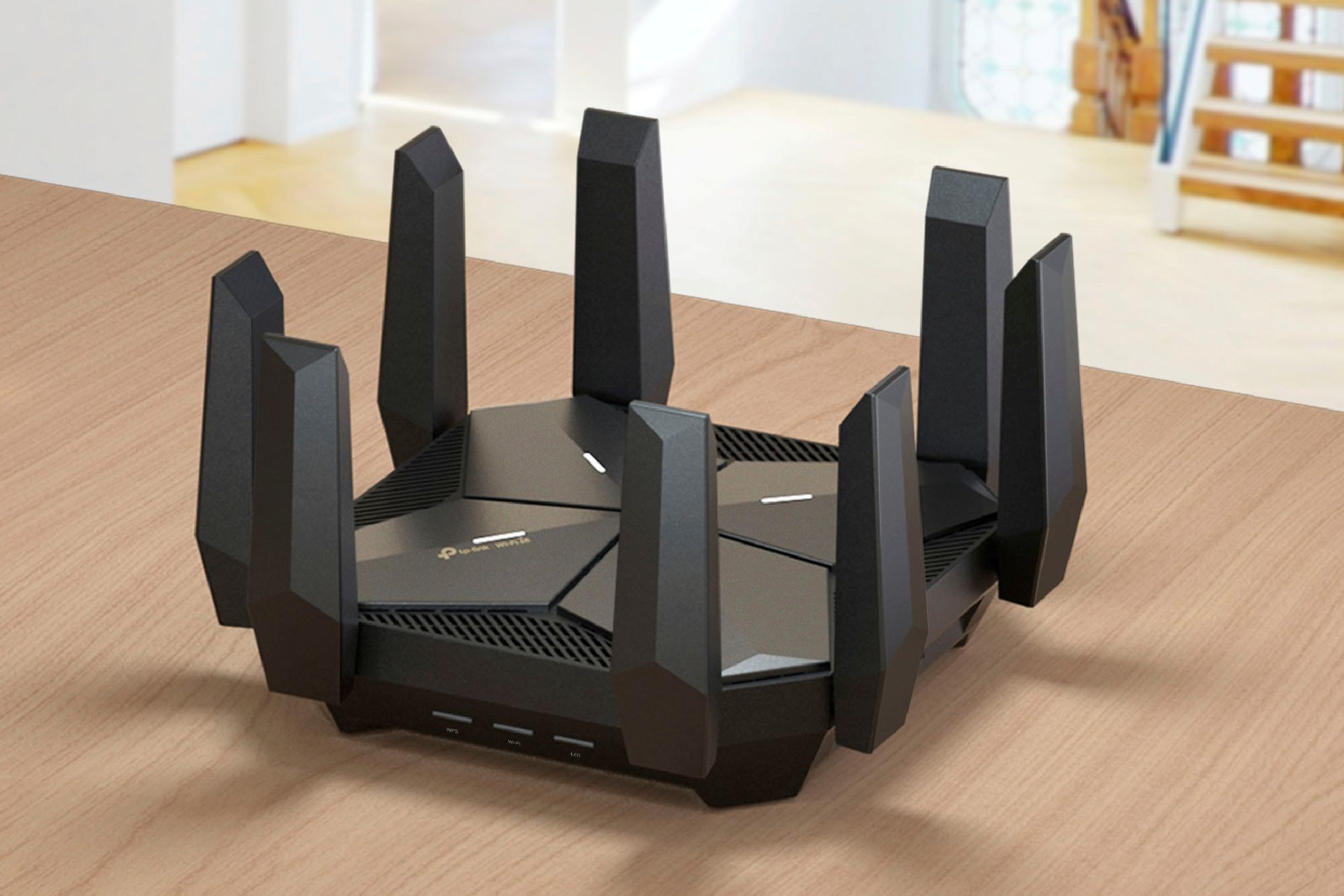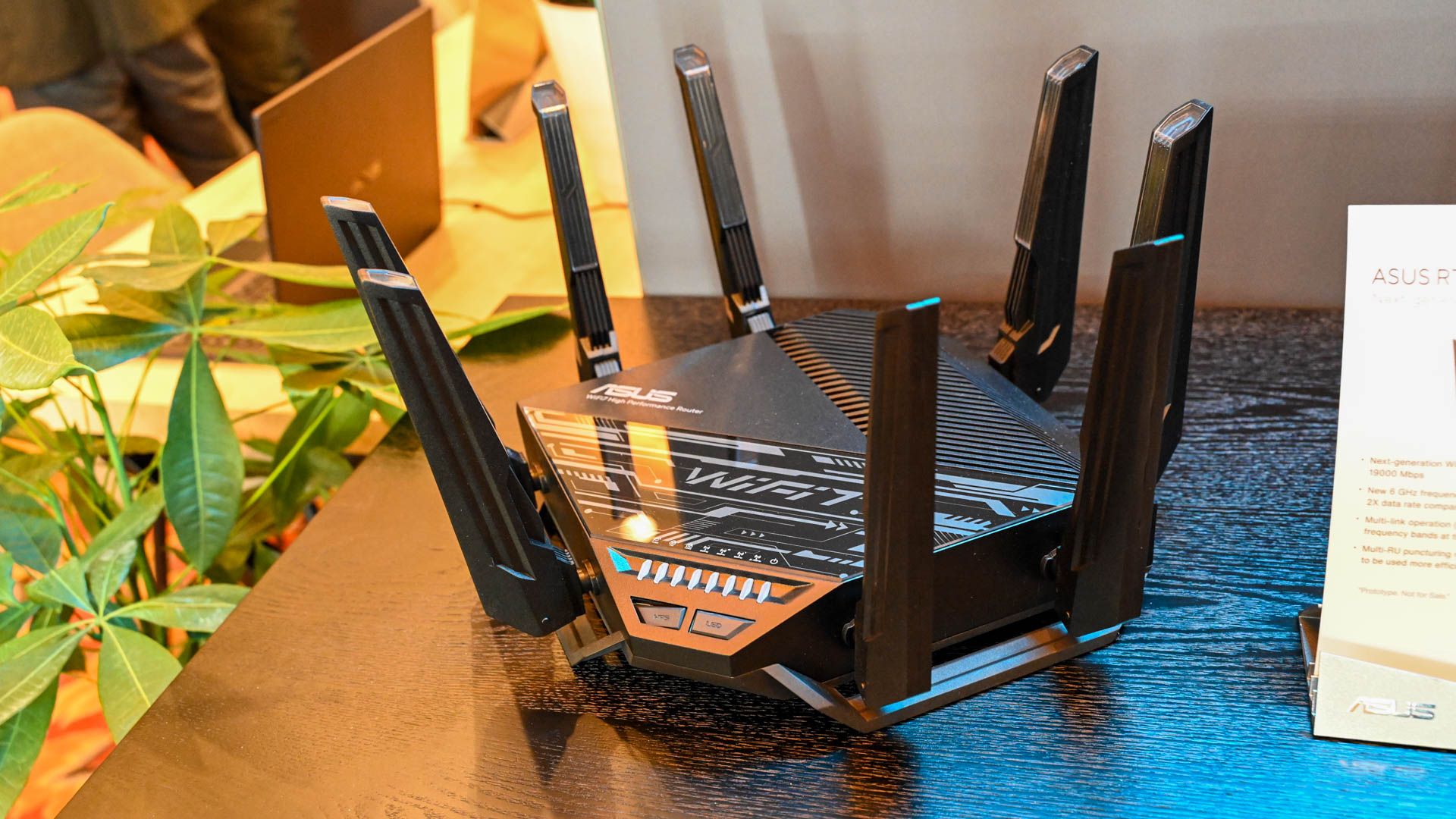
A wireless router is an essential piece of technology. A new router upgrades your wireless network with faster speeds, a stronger signal, better security, and an extended range.
UPDATE: 12/26/2023
We’ve updated our picks for the best router overall, best gaming router, and best Wi-Fi 6E router. Take a look!
What to Look For in a Router in 2023
We think Wi-Fi 6 is extremely important when picking a Wi-Fi router now. While Wi-Fi 7 has been announced, the new protocol isn’t widely available yet, so Wi-Fi 6 and 6E are what you should look for in a router now.
If you’re buying a new router, you want it to be future-proof for a few years, and you can get very reasonably priced Wi-Fi 6 routers. Gigabit internet is becoming more common, too—and if you want the best router for gigabit internet, you want Wi-Fi 6.
However, we’ve also included a few router models that don’t have Wi-Fi 6, but they offer compelling features like a highly affordable price or best-in-class VPN configuration.
We don’t think there’s a best router for Xfinity, Spectrum, Verizon FIOS, or any other internet service provider. We recommend you pick whichever router fits your needs. The only thing that is ISP-specific is your modem, so this only matters if you’re choosing a combined router-modem unit. For most people, we recommend a separate router and modem, which will give you more choices.
Beyond that, it all comes down to how much money you want to spend, which features you’re looking for, and how much bleeding-edge technology you want in your wireless router.
|
How Did We Research |
||
|
Models Evaluated |
Hours Researched |
Reviews Analyzed |
|
25 |
30 |
38 |
How-To Geek’s product recommendations come from the same team of experts that have helped people fix their gadgets over one billion times. We only recommend the best products based on our research and expertise. We never accept payment to endorse or review a product. Read More »
|
Pros |
Cons |
|---|---|
|
Impressive performance |
Less number of LAN ports than its predecessor |
|
Two 2.5G ports |
Not wall mount ready |
|
Wi-Fi 6 connectivity |
The ASUS RT-AX88U Pro, an upgraded version of our previous pick for this category—the RT-AX88U—is the best Wi-Fi router for most people. It’s priced reasonably and has a solid feature set to make the most of your gigabit or sub-gigabit internet connection.
This is a dual-band Wi-Fi 6 router, so you will get a better wireless performance than a Wi-Fi 5 router, and it can deal with a large number of wireless devices more efficiently. You also get one 2.5G WAN port, one 2.5G LAN port, and four gigabit LAN ports. The lack of additional LAN ports is disappointing, considering its predecessor had nine ports. But you can always use a network switch for additional Ethernet ports.
In terms of performance, the RT-AX88U Pro pips most Wi-Fi 6 routers and offers an excellent range.
Among other highlights, the ASUS offering has AiMesh support, WAN aggregation, LAN aggregation, QoS (quality of service), a network scanner, parental controls, and built-in VPN client support.
The RT-AX88U Pro is also an excellent option for gaming. Unfortunately, it’s a bit bulky and has a big power adapter. The router also lacks wall mounting holes.
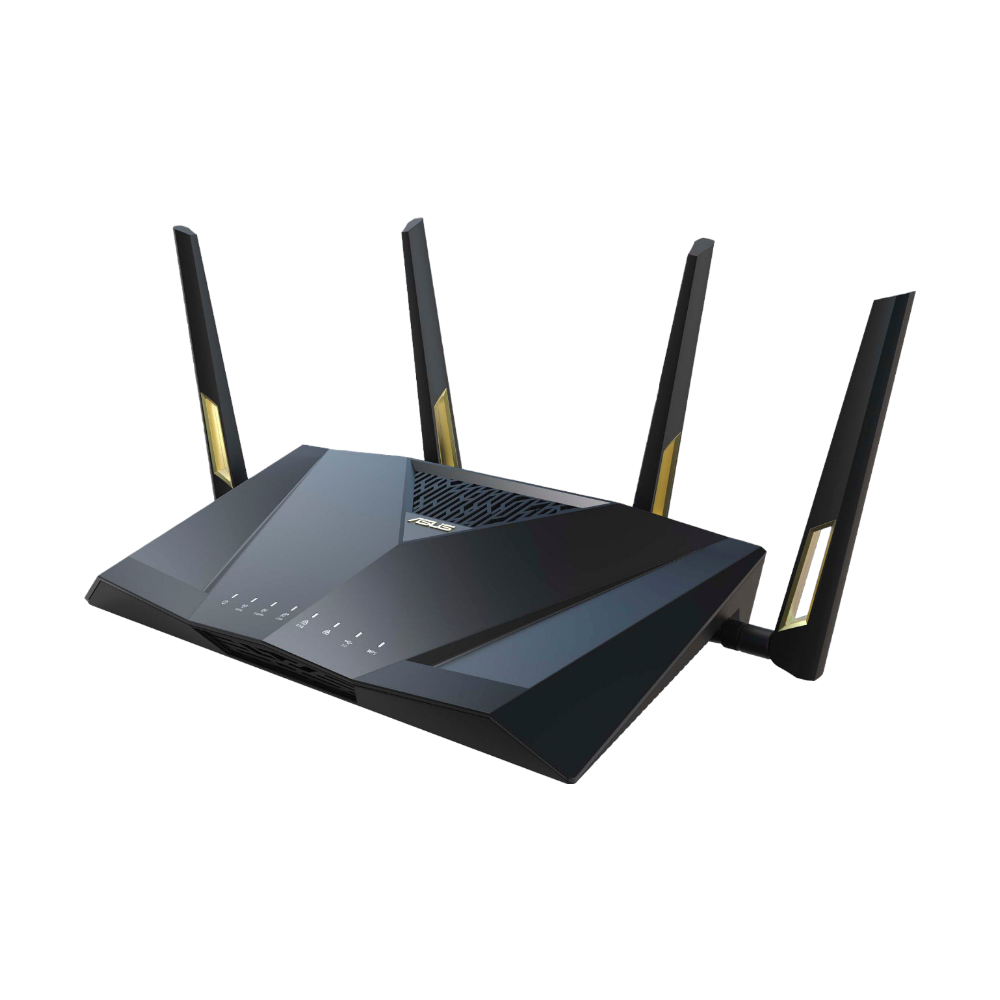

ASUS RT-AX88U Pro
Best Wi-Fi Router
$256 $300 Save $44
Asus RT-AX88U Pro is an impressive Wi-Fi 6 router that delivers fantastic performance. It’s also reasonably priced and can efficiently handle modern connectivity needs.
|
Pros |
Cons |
|---|---|
|
A solid router at a very low price |
No Wi-Fi 6 |
|
1900 Mbps speeds |
If you need a router that’s even cheaper than our top budget pick, the TP-Link Archer A8 will be a decent choice. This router doesn’t have Wi-Fi 6—only Wi-Fi 5, so it’s not as future-proof as many of the other options on this list. But, if you have a small area to cover and don’t have too many devices, you’ll likely be pretty pleased with this router. It’s an improved version of the Archer A7, our previous pick for a router under $100.
The Archer A8 offers speeds of up to 1900 Mbps, faster than the 1750 Mbps of the Archer A8. But compared to the 3000 Mbps for our top budget pick and 6000 Mbps for our overall top router, the A8 will still be on the slower side.
If you have Wi-Fi 6 devices, you can still connect them to the Archer A8 (or any Wi-Fi 5 router), but you’ll only get the slower Wi-Fi 5 speeds. Routers in this price range also tend to have their performance suffer when more devices are connected. But if you’re living in a small home or apartment and simply just need a router, the Archer A8 won’t hit your wallet too hard.
We don’t recommend spending less than this for a router—or even trying to get Wi-Fi 6 at this price range. For example, TP-Link itself offers a similarly priced router with Wi-Fi 6, the TP-Link Archer AX10. Despite that Wi-Fi 6 promise, the router is slower than this Wi-Fi 5 router, topping out at 1500 Mbps.
For now, if this is your price range, we recommend you stick with this reliable Wi-Fi 5 router.
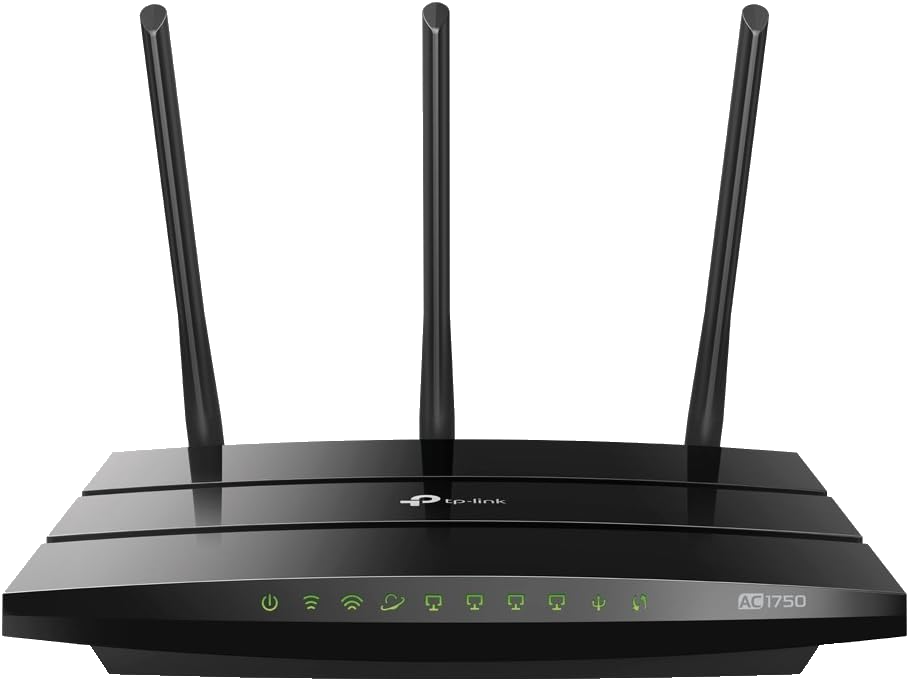

TP-Link Archer A8
Best Budget Router
$56 $80 Save $24
A rock-solid router at a low price. However, it’s slower, and you don’t get Wi-Fi 6.
|
Pros |
Cons |
|---|---|
|
Excellent performance and reliable connectivity |
Not wall-mount ready |
|
Wi-Fi 6 support |
Bulky |
|
Mesh support |
|
|
Various features to prioritize gaming traffic |
If you love gaming online and want a Wi-Fi router that can deliver the best performance, it’s hard to go wrong with the ASUS ROG Rapture GT-AX6000. Although the GT-AX6000 was expensive when launched, it has since seen a price cut and can be readily found under $300, making it much easier to recommend now.
It packs two 2.5G ports, Wi-Fi 6 connectivity, various gaming-related features, and a fast processor to deliver excellent performance whether you’re gaming, streaming, or just catching up on social media. It’s also reliable and consistent in its performance.
One of the two 2.5G ports is reserved for WAN, but you can use the other for LAN. You also get four Gigabit LAN ports for wired connectivity. In other highlights, you get AiMesh support, WAN and LAN aggregation, and almost everything typically available with ASUS routers.
Regarding the gaming features, you get a dedicated gaming port to connect to your console or gaming PC, and its traffic will always be prioritized. Even when not using the gaming port, the Game Boost technology can push gaming data packets ahead in the queue.
There is much to like about the ASUS ROG Rapture GT-AX6000. But unfortunately, it’s pretty large and unsuitable for wall-mounting out of the box.
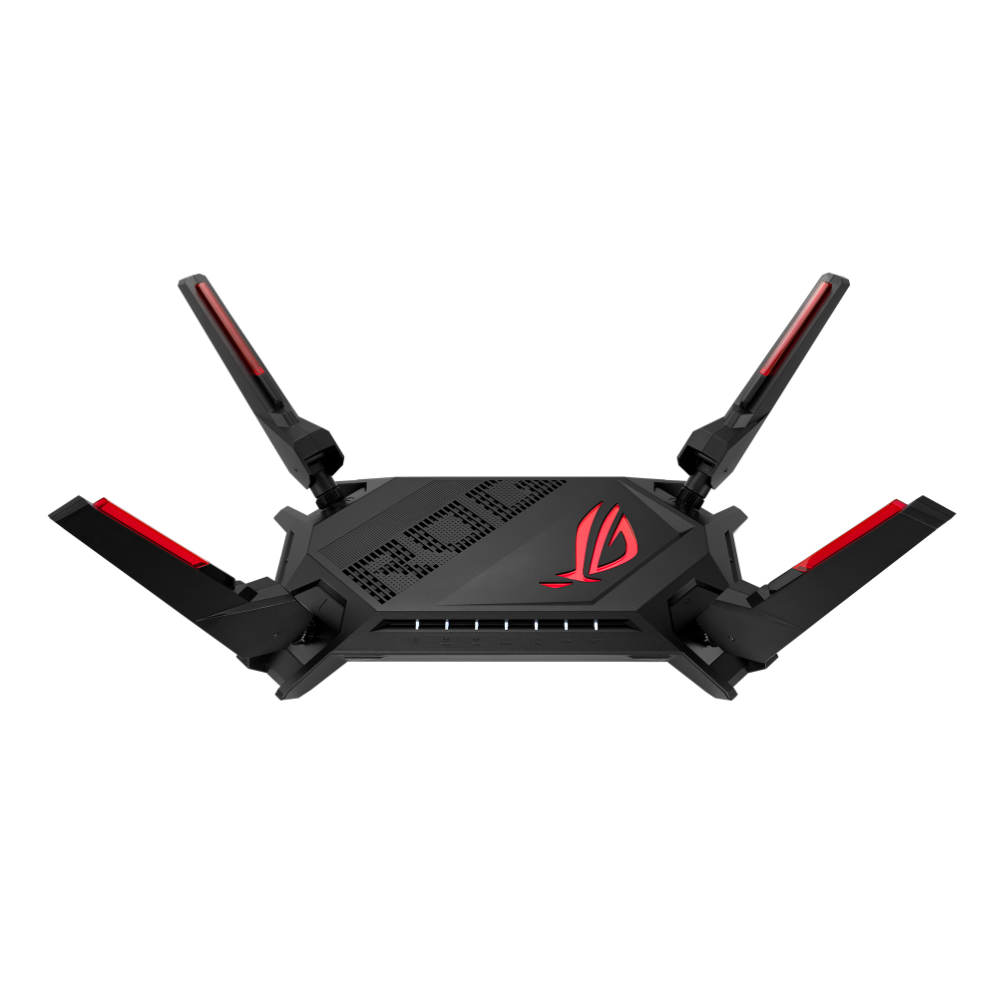

ASUS ROG Rapture GT-AX6000
Best Gaming Router
$260 $300 Save $40
Asus ROG Rapture GT-AX6000 is a solid dual-band Wi-Fi 6 router with multiple gaming-related features, 2.5G WAN and LAN ports, and an impressive performance.
|
Pros |
Cons |
|---|---|
|
Wi-Fi 6 |
More expensive than mesh systems without Wi-Fi 6 |
|
5500 square feet of coverage |
Not as simple to configure as Google Nest Wifi |
|
QoS for traffic prioritization |
A mesh Wi-Fi system combines a router with one or more extenders. You place these units throughout an area—for example, in different rooms throughout your home—and get a stronger signal throughout a much larger area than a single router unit could cover. They’re an excellent solution for coverage throughout large homes, pushing your signal out into the yard, or boosting coverage anywhere you have a weak signal or dead zones.
Compared to a traditional wireless range extender, a mesh network system is much more seamless. Range extenders generally create their own separate network with their own name, forcing your device to connect to the main router or the extended network.
A mesh networking system has a single Wi-Fi network name, and all the devices are aware of each other and can work together intelligently and seamlessly. It’s more simple to set up than configuring a traditional range extender, too.
We like the ASUS ZenWiFi AX6600 (XT8) because, unlike many other mesh Wi-Fi systems, it supports Wi-Fi 6. It comes with two units and promises coverage for a total area of up to 5500 square feet. This is the best Wi-Fi 6 mesh router, thanks to features like QoS (quality of service) support for prioritizing traffic and optional anti-malware and parental control features.
Netgear’s Orbi 6 is also a strong contender, but it’s even more expensive than the ASUS ZenWiFi hardware we recommend, and it lacks some of ZenWifi’s features.
Want more coverage? You can buy additional satellites separately and add them to your AiMesh network. The best router for a large house is a mesh system with however many satellites you need.
If you’re looking for the best long-range router, choose a mesh Wi-Fi system. It will give you robust and consistent coverage throughout your home or business. If you want to extend your Wi-Fi network out into the yard, consider placing one of the satellites at the edge of your home.
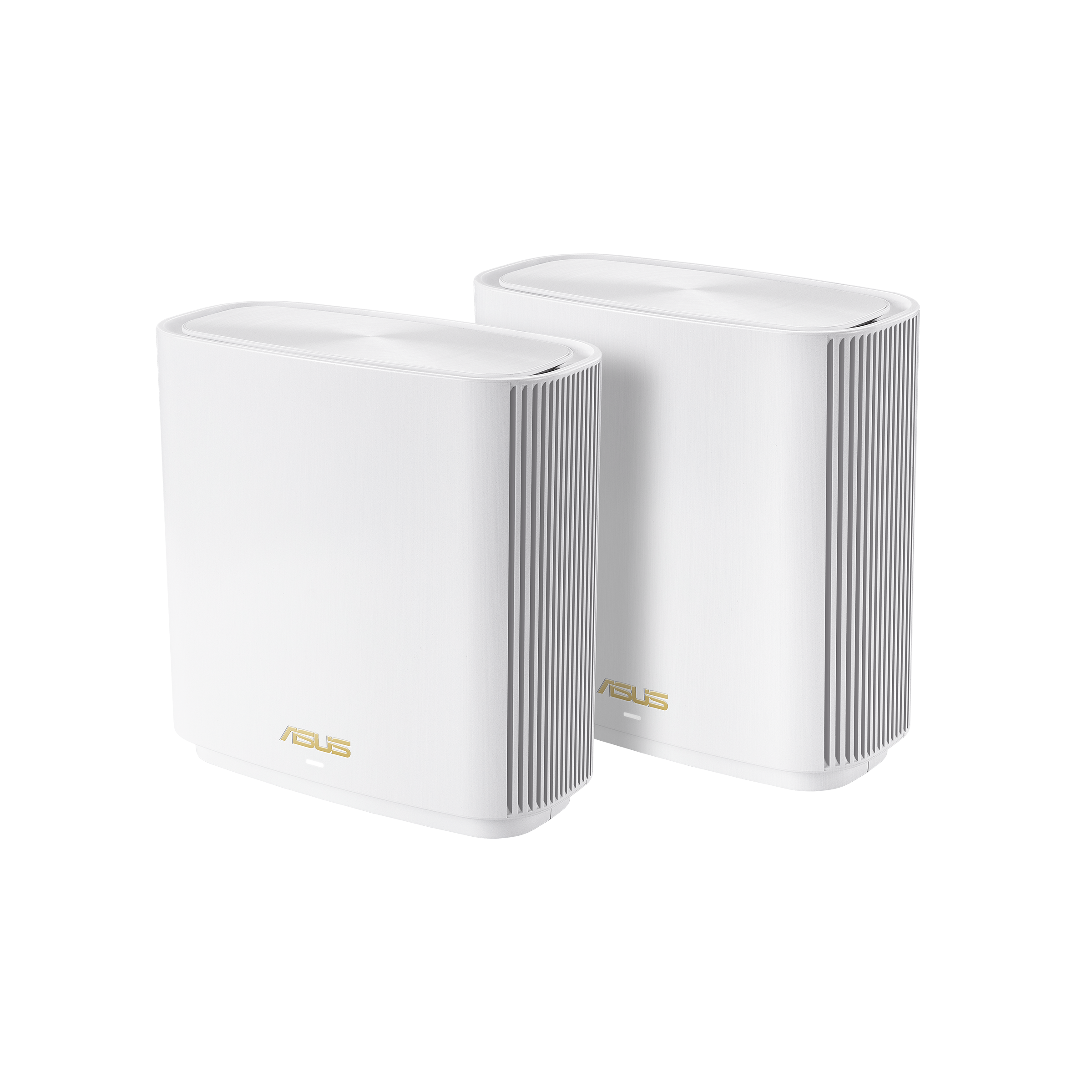

ASUS ZenWiFi AX6600 (XT8) (2 Pack)
Best Mesh Wi-Fi Router
$288 $400 Save $112
A powerful mesh Wi-Fi system with Wi-Fi 6 and Quality of Service (QoS) traffic prioritization.
|
Pros |
Cons |
|---|---|
|
Low-budget Mesh networking |
Lacks a dedicated backhaul channel |
|
Supports Wi-Fi 6 and earlier devices |
Network speed could be better |
|
Easy to set up and configure |
|
|
Provides good network coverage |
Mesh router systems are typically expensive, but you don’t need to pay an arm and a leg to try one out. The TP-Link Deco X20 provides good performance and features without costing a fortune.
The basic kit includes two nodes, which can provide coverage of up to 4,000 square feet, for $180. That should be more than enough for an average-sized home. If not, you can extend coverage to 5,800 square feet with a 3-node kit for around $199.
The nodes are fairly small and compact, and the main hub and the satellites look the same. Each node features two gigabit Ethernet ports, so you can connect devices with a physical cable to any of them if needed. However, there are no USB ports on any of the nodes, so any network-attached devices will also need to use a LAN port.
The Deco X20 supports devices that use Wi-Fi 6, as well as those that use earlier Wi-Fi versions. Wi-Fi 6 devices can use OFDMA technology to share bandwidth across multiple connections and take full advantage of the available 1800Mbps. Even without that option, the potential top speeds of 1201Mbps on the 5GHz frequency and 574Mbps on 2.4GHz are reasonable.
There is, however no dedicated backhaul channel for the mesh. That means the signal will degrade as it travels between nodes and result in slower speeds from the satellites than when connected to the hub.
But while the backhaul channel is nice to have, it does tend to cost more money. If this is something you want, the 3-pack does have Ethernet backhaul available, so it’ll be about $20 for the upgrade. The Deco X20 also supports beamforming and MU-MIMO, which can improve signal strength and should go some way towards making up for slower speeds.
If you are looking for a mesh router on a tight budget, the Deco X20 is hard to beat for the money. There are some compromises in terms of top speed and advanced features, but for the average family looking to extend network coverage to all corners of the house, it’s a great choice.
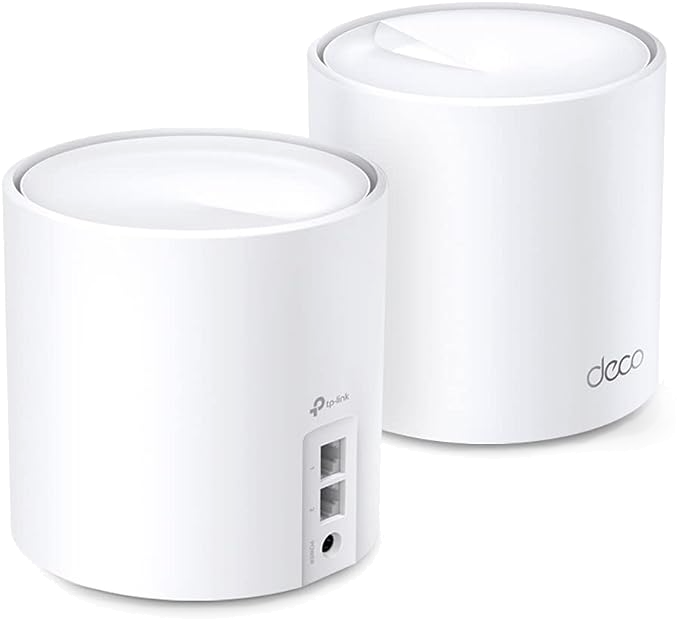

TP-Link Deco X20
Best Budget Mesh Router
TP-Link offers a true budget Mesh router that manages to provide good Wi-Fi 6 performance for the average home.
|
Pros |
Cons |
|---|---|
|
Wi-Fi 6 |
Fewer features |
|
Gigabit-capable DOCSIS 3.1 modem |
A combo unit is a worse value |
Let’s be clear—you don’t need a combined modem router combo unit. You can buy any of the routers here and connect it to your ISP’s modem, or you can buy your own modem (like the Motorola MB8600, which is ready for gigabit internet) and connect any of the routers in this list to that. You have many more options when you pick a router and modem separately.
But some people want that combo unit. After all, it’s just one device instead of two—there’s a sleek simplicity in that.
If you’re looking for a modem router combo that works with Cox, Spectrum, Xfinity, we like the NETGEAR Nighthawk CAX80. It’s one of the few modem router combo units that supports Wi-Fi 6. It also features a built-in DOCSIS 3.1 modem, meaning it can work with gigabit internet connections.
Beyond the modem, you have a solid high-end Netgear Nighthawk dual-band Wi-Fi 6 router with 6000 Mbps maximum speeds and OFDMA for long-range Wi-Fi 6 connections.
Unfortunately, it can’t match all the features of our top picks: This router doesn’t support WPA3 security. There’s no QoS (quality of service) support for prioritizing traffic. You cannot configure the router as a VPN client to route all your internet traffic through the VPN, as you can with our top overall router and top gaming router picks from ASUS.
While ASUS and TP-Link offer free lifetime subscriptions to their router’s security services, NETGEAR only provides a free 30-day trial, after which you’ll have to pay for additional time if you want to use it.
Overall, we think it makes sense to get both a router and a modem separately. But, if you want a single unit, this is the one to buy.
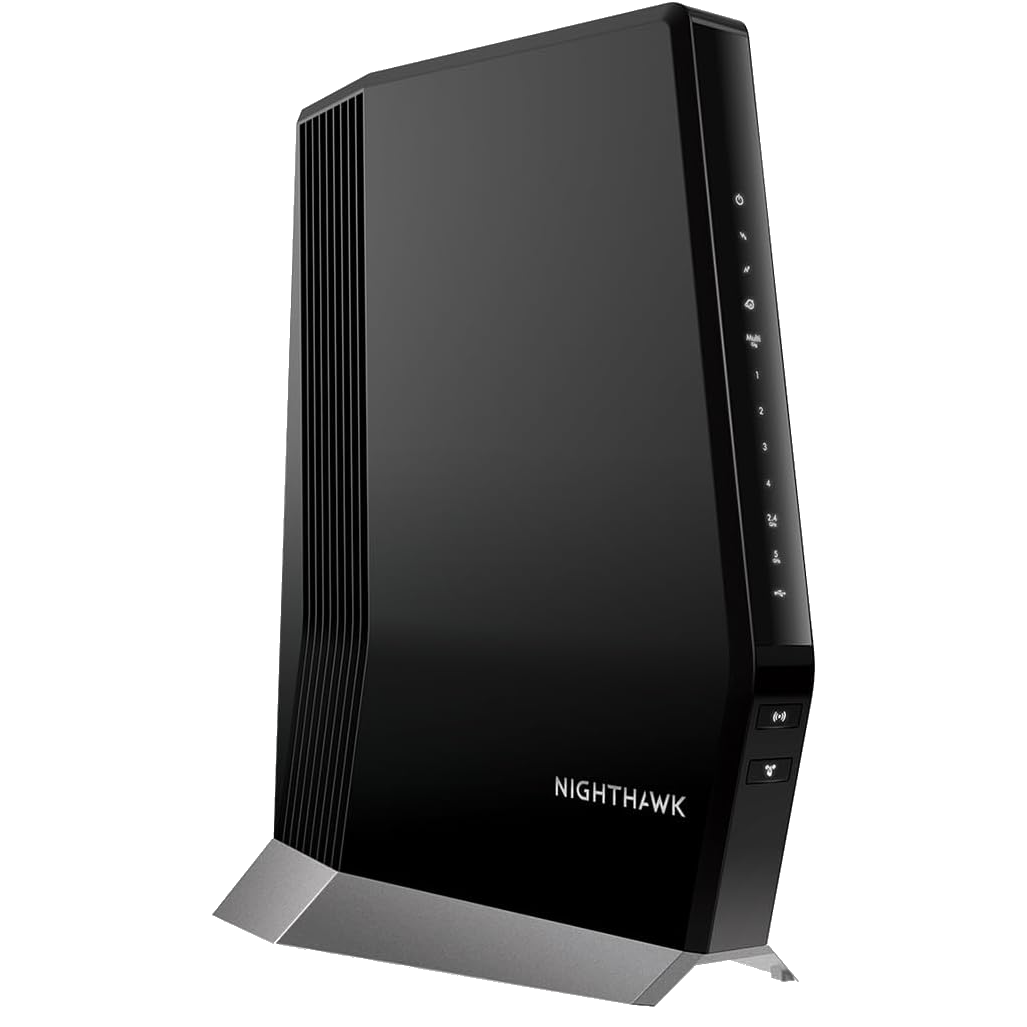

NETGEAR Nighthawk CAX80
Best Modem Router Combo
A combo unit with a Wi-Fi 6 router and a gigabit-capable DOCSIS 3.1 modem.
|
Pros |
Cons |
|---|---|
|
Comes preinstalled with ExpressVPN firmware |
Doesn’t have a working USB port |
|
Wi-Fi 6 |
Only supports ExpressVPN |
|
OFDMA and MU-MIMO |
|
|
Supports running multiple VPN servers at once |
|
|
Affordable price compared to other VPN routers |
The ExpressVPN Aircove is a unique beast among Wi-Fi routers because it comes preinstalled with ExpressVPN firmware, our favorite VPN. Not only that, but unlike other routers that support custom VPN firmware and are limited to Wi-Fi 5 (802.11ac), the ExpressVPN Aircove supports Wi-Fi 6.
All you have to do to get a network-wide VPN running on the router is enter your ExpressVPN credentials during the setup process. Quick, simple, and much more accessible than even flashing custom VPN firmware on routers that support it.
The browser-based router UI is simple to use and packed with features, and you’ve also got some pretty nifty VPN options, such as running multiple VPN servers at once. For instance, your phone can connect to a US server, with your work PC being redirected to a server based in Japan or any other supported country. And your gaming PC can be set to not connect to a VPN server at all to maximize download speeds.
As for the specs, aside from Wi-Fi 6 support, you’ve got dual-band Wi-Fi coverage, four gigabit LAN ports on the back along with a single WAN port, MU-MIMO and OFDMA support, up to 600Mbps on the 2.4GHz band and up to 1200Mbps over the 5GHz frequency—when connected to ExpressVPN, each device can use speeds of up to 180Mbps—1600 square feet Wi-Fi coverage, and a 1.2GHz quad-core CPU.
The only nitpick we have, aside from the lack of a working USB port, is that the router doesn’t support other VPNs. In case you decide to stop using ExpressVPN, you can continue using the Aircove like a regular Wi-Fi router, so there’s that.
If you’re looking for a router with VPN client support to connect to other VPNs, check the ASUS AX6000 (RT-AX88U). And if you’re looking for a VPN-friendly gaming router, the ASUS GT-AX11000, our top gaming router, is the way to go.
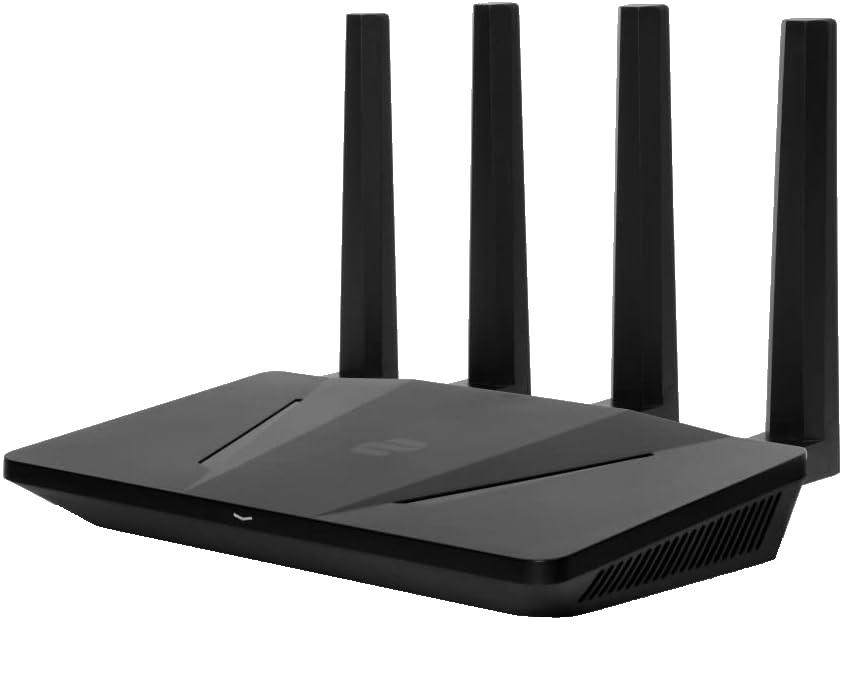

ExpressVPN Aircove
Best VPN Router
This easy-to-use VPN router has ExpressVPN’s software built in so you can connect your entire network to a VPN, have only certain devices go through the VPN, and switch VPN servers. Other positives include Wi-Fi 6 support, four gigabit LAN ports, MU-MIMO, and OFDMA.
|
Pros |
Cons |
|---|---|
|
Turn any Ethernet port into a Wi-Fi hotspot |
Slower than home routers (but faster than hotel Wi-Fi) |
|
Better than hotel Wi-Fi |
|
|
Inexpensive |
A travel router is a must-have for anyone who’s sick of dealing with hotel Wi-Fi. More than that, it’s a must-have for setting up your own solid little Wi-Fi network anywhere you have access to a wired Ethernet connection.
Hotel Wi-Fi is rough. The speeds are often very slow, and you may only be able to connect a few devices. You’ll have to manually connect to the network and type a password on each device you use. But, generally, there’s an Ethernet port right in your room.
A travel router is a small, portable device that you can connect to Ethernet ports like this. It will quickly create your own personal Wi-Fi bubble using that wired network. You can connect all your devices without typing a new password—they’ll remember your travel network credentials—and you won’t be dependent on the hotel’s slow Wi-Fi.
The TP-Link AC750 makes for an excellent travel router. It doesn’t have Wi-Fi 6, but let’s be honest: neither do most hotel Wi-Fi networks. It’s a wireless AC (Wi-Fi 5) router that can deliver speeds of up to 733 Mbps—a lot faster than what typical hotel Wi-Fi will provide—and it’s very inexpensive and compact.
This device is also created by TP-Link, a trusted manufacturer with an excellent reputation that makes our top budget and cheap router picks.
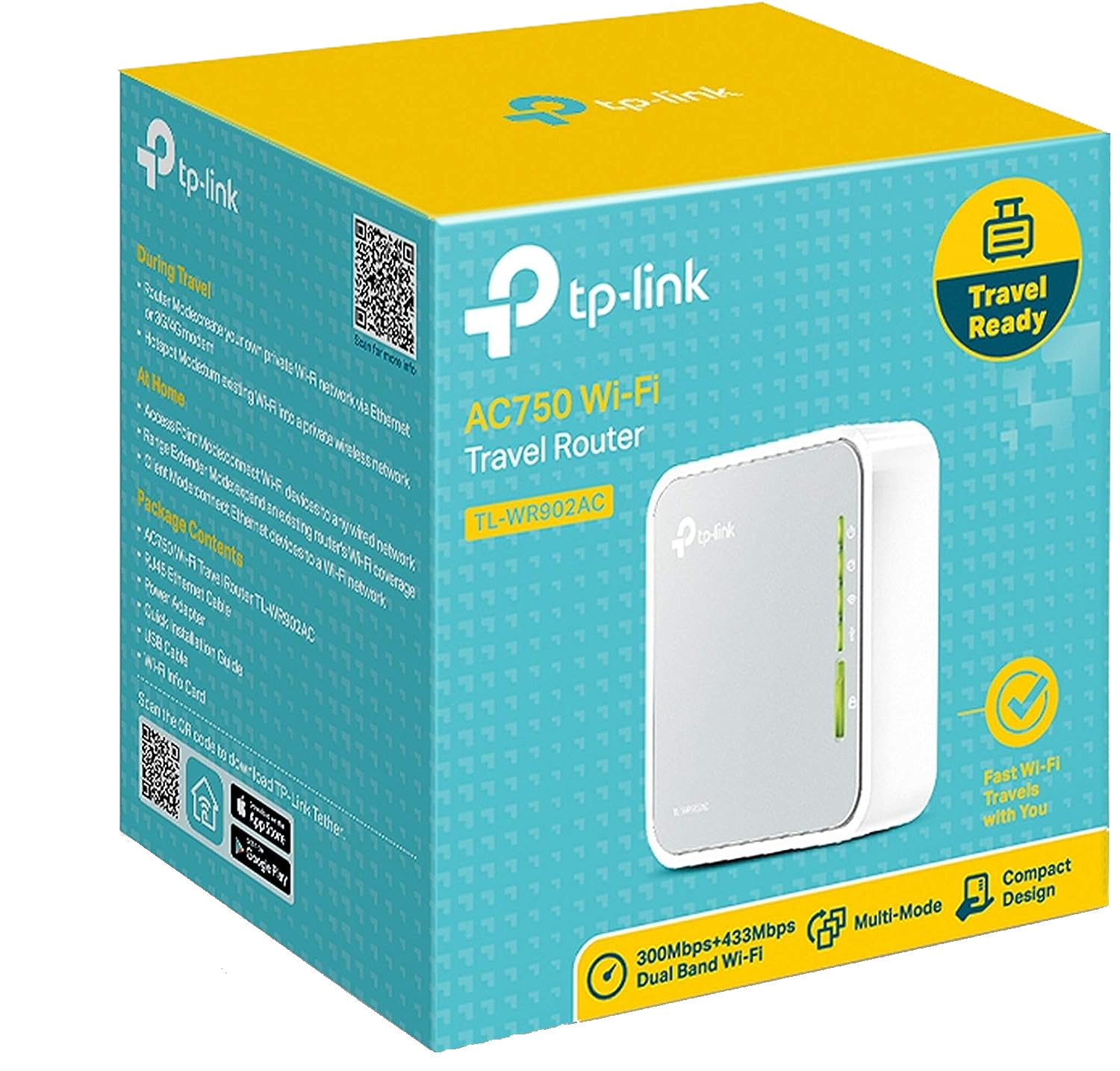

TP-Link AC750
Beat Travel Router
An inexpensive way to get better Wi-Fi in hotels (and elsewhere) while traveling.
|
Pros |
Cons |
|---|---|
|
Solid performance |
Big size |
|
Quad-band and combined 15.6Gbps bandwidth |
HomeShield Pro is paid |
|
Three multi-gig ports |
If you own multiple Wi-Fi 6E devices or are planning to get them, it’s a good idea to invest in a Wi-Fi 6E router, such as the TP-Link Archer AXE300, to get the most out of them. It’s an excellent Wi-Fi 6E router with tons of helpful features that allow it to provide solid performance. For example, it’s a quad-band router. So, apart from the ultra-fast 6GHz band, you get two 5GHz bands and a 2.4GHz for better wireless bandwidth management.
In addition, it features a 15.6Gbps bandwidth and two 10G ports that can work as WAN or LAN ports as needed. So, even if you have a multi-gig internet connection, the TP-Link offering will not break a sweat. Other ports include four Gigabit and one 2.5G Ethernet port.
The Archer AXE300 is also easy to install and offers excellent coverage. You can also expand the wireless coverage by connecting other TP-Link routers, as the AXR300 supports the company’s OneMesh technology.
Other features include TP-Link HomeShield, which offers a network scanner, parental controls, and QoS functions. You can get more such features, such as DDoS protection and advanced parental controls, as a part of HomeShield Pro, but you will have to pay for that. It’s also big in size but can still be wall-mounted.
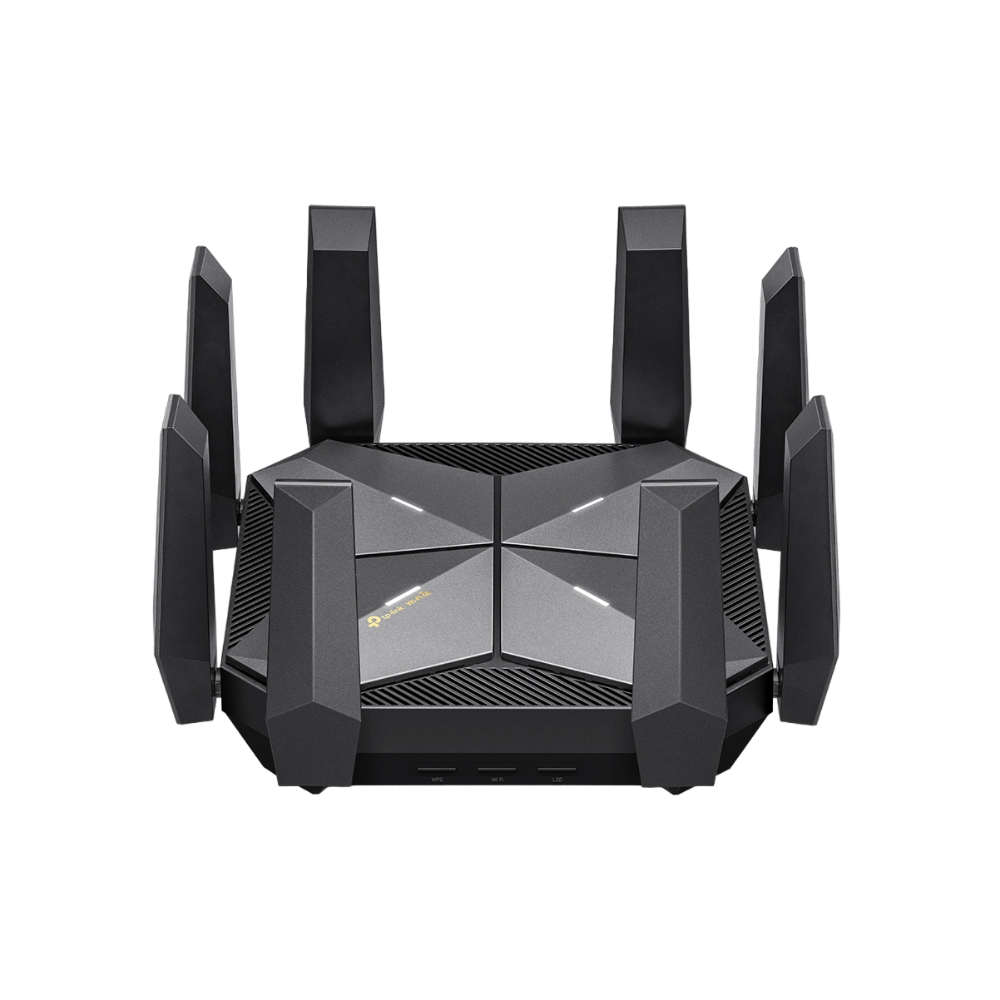

TP-Link Archer AXE300
Best Wi-Fi 6E Router
$431 $600 Save $169
TP-Link Archer AXE300 shines as a Wi-Fi 6E router thanks to its quad-band support, two 10G ports, fantastic performance, and good coverage area.
FAQ
What is a Wi-Fi router?
A router creates a local network, forwarding traffic between your local devices and the internet. A Wi-Fi router is a router that also functions as a wireless access point, letting you connect devices to the network over Wi-Fi. Without a router, you could only be able to connect a single device to your internet modem via an Ethernet cable. (However, modern modems provided by internet service providers often include built-in Wi-Fi routers.)
How do you reset a Wi-Fi router?
To reboot your Wi-Fi router, unplug its power cable, wait about ten seconds, and plug it back in. To reset a Wi-Fi router to factory default settings, look for a reset button on the router itself—you will often need to long-press it for ten seconds or so. Check your specific router’s documentation for more information.
How do you update router firmware?
Your router’s web interface or the app you use to configure your router will have an option for updating its firmware, which is the software that runs on your router. You may have to manually download a firmware update file from your router manufacturer’s website. Consult your router’s documentation or your router manufacturer’s website for more specific details.
What is the WPS button on my router?
The Wi-Fi Protected Setup button lets you connect a device to Wi-Fi without typing your Wi-Fi password. Generally, you will first try connecting the device to your Wi-Fi network. When you’re prompted for a password, you may also see a message telling you that “you can also connect by pushing the button on your router.” You can then push your router’s WPS button to connect without typing the password. (This only works on some devices. For example, Android doesn’t support WPS.)
How can I best place my router for the widest coverage?
Place your router in a central location. In a two-level house, consider placing it near the floor of the second floor or the ceiling of the first floor. Avoid obstructions that can block Wi-Fi, including metal, large appliances, microwaves, and concrete walls (drywall isn’t a problem.) For the best coverage, consider a mesh Wi-Fi system.
How does router price affect performance?
More expensive routers tend to offer faster speeds and wider areas of strong coverage. They have hardware features lacking in less expensive routers. How much this matters depends on how many devices you’ll be connecting at once, what you’ll be doing on them, and how far away from your router those devices are.
How can I boost my Wi-Fi signal?
The most important tip is to position your router in a good location. You should also ensure you’re connected to the 5 GHz network. We’ve got more tips for boosting your Wi-Fi signal. If none of them works, consider buying a new router, switching to a mesh Wi-Fi system, or perhaps just adding a Wi-Fi extender.
Do routers make noise?
A router shouldn’t make much noise. Most home routers don’t have fans, but if the router has a cooling fan inside it, you may hear a quiet fan noise while it’s running—just like you would on a laptop. Like other electrics, a router might make a buzzing or humming noise while it’s running.
How do you tell if Wi-Fi is 2.4 GHz or 5 GHz?
While connected to the Wi-Fi network, you can go into your device’s Wi-Fi settings and look through the Wi-Fi network’s information to see if it says it’s using the “5 GHz” or “2.4 GHz” network band. (This information is not displayed on all devices.) Most routers use the same Wi-Fi network name for both 2.4GHz and 5GHz by default, and your device automatically connects to the best one at any given time. However, you can set most routers up to have separate network names for the 2.4 GHz and 5 GHz networks, so you’ll always know which your device is connected to.
How does my modem affect my router?
Your modem is the device that connects to your internet service provider’s network: cable, fiber optic, DSL, or satellite. You connect your router to your modem via an Ethernet cable. Modern ISPs often provide combined modem-router units that include router hardware in the same box as the modem hardware. If you have one of these, you can configure your modem in “bridge mode” so that it will just function as a modem and let your router take over all routing duties. Consult your modem’s documentation for more information.
How do you find Wi-Fi network congestion?
Congestion could occur when a device is using a lot of bandwidth on your network. Some routers may show the data usage of individual devices in their web interfaces or apps. However, in many cases, you will need to look at the information on each device itself to see which device is using the most data.
How hot do routers get?
Like other electronics, a router produces heat as it operates. If you cover a router or block its vents, it will get too hot. Some router manufacturers say their routers are designed to operate at temperatures up to 104 degrees Fahrenheit (40 degrees Celsius.) How hot a router will get depends on the ambient temperature of the room, whether it has good airflow to cool itself, how much work it’s doing, and the model of router itself.

